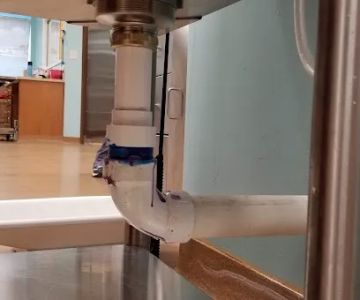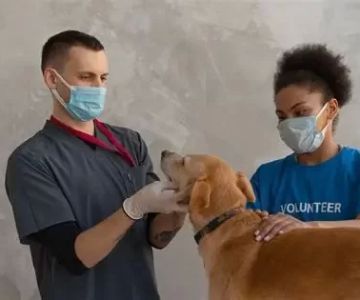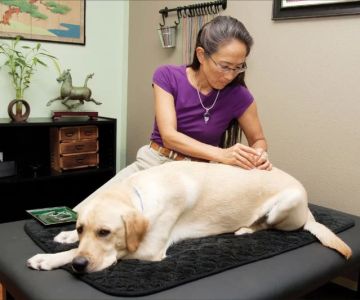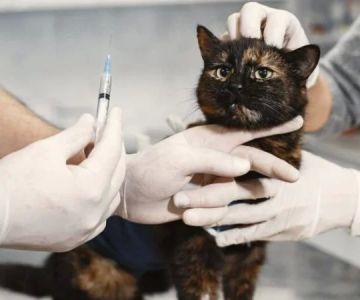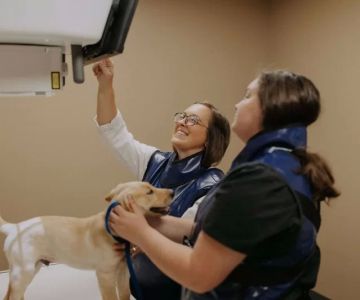- 01-growing-demand-for-veterinary-services
- 02-what-is-the-job-outlook-of-a-veterinarian-in-2025-and-beyond
- 03-emerging-specializations-and-career-paths
- 04-real-world-case-study-on-veterinary-growth
- 05-salary-trends-and-employment-benefits
- 06-is-a-career-in-veterinary-medicine-right-for-you
- 07-how-to-start-your-journey-in-the-veterinary-field
1. Growing Demand for Veterinary Services
The modern pet-owning population is more committed to animal wellness than ever before. With over 66% of U.S. households owning a pet, the demand for quality veterinary care is surging. This directly impacts the job outlook of a veterinarian, making it one of the most promising healthcare careers today.
According to the U.S. Bureau of Labor Statistics (BLS), the employment of veterinarians is projected to grow 20% from 2022 to 2032—much faster than the average for all occupations. Pet owners increasingly view animals as family members, and this cultural shift has transformed how much they're willing to invest in preventive care, diagnostics, surgery, and rehabilitation.
2. What Is the Job Outlook of a Veterinarian in 2025 and Beyond?
The job outlook of a veterinarian in 2025 looks more diverse and opportunity-rich than ever. Demand is expanding not only in small animal practice but also in equine, exotic, and agricultural sectors. Even beyond traditional clinics, veterinarians are being hired in roles related to public health, research, food safety, and biotechnology.
Telemedicine, AI diagnostic tools, and mobile vet services are shaping the new frontier. Veterinary professionals equipped with digital skills and flexibility will likely lead the field. Whether you're in rural Georgia or downtown Los Angeles, the need for qualified veterinarians is growing steadily, with job availability expected to remain high.
3. Emerging Specializations and Career Paths
One exciting aspect of the veterinary profession is its specialization potential. From oncology and internal medicine to wildlife conservation and zoological medicine, the job outlook of a veterinarian includes endless branching paths.
3.1 Companion Animal Veterinarians
Still the most common, but increasingly complex. Many now incorporate dental surgery, behavioral counseling, and rehabilitation into their offerings.
3.2 Emergency & Critical Care
This high-stakes path offers fast-paced decision-making and advanced diagnostics. Many hospitals are hiring ER vets around the clock.
3.3 Veterinary Public Health
With increasing global attention on zoonotic diseases, vets are collaborating with government and public health agencies more than ever before.
3.4 Veterinary Telehealth
Post-pandemic innovation has made virtual consultations more common, creating jobs for tech-savvy practitioners looking for remote opportunities.
4. Real-World Case Study on Veterinary Growth
Take the case of Dr. Amanda Reyes in Colorado Springs. In 2020, she launched a mobile clinic for underserved communities. Within two years, her practice had doubled in size, offering on-site care to over 2,000 pets annually. “The demand was there—I just had to meet people where they were,” Dr. Reyes says.
This case highlights how innovation and community-minded practice models directly contribute to career expansion in veterinary medicine. The job outlook of a veterinarian isn’t just about numbers—it’s about solving real-world needs.
5. Salary Trends and Employment Benefits
Veterinarians in the U.S. currently earn a median annual salary of around $103,000. However, earnings vary by specialty and region. For instance, board-certified veterinary surgeons or dermatologists often earn upwards of $160,000 annually.
Beyond salary, many employers now offer impressive benefit packages: student loan assistance, signing bonuses, CE stipends, and even profit-sharing. As demand continues to rise, especially in rural and emergency settings, competitive offers are becoming the norm.
6. Is a Career in Veterinary Medicine Right for You?
The veterinary path is rewarding, but not for the faint of heart. You’ll need to combine medical precision with compassion and resilience. Emotional fatigue, student debt, and long hours are real concerns—but so are fulfillment, purpose, and the joy of improving animal lives.
If you're motivated by service, curious about biology, and crave a hands-on medical profession, then veterinary medicine might be your ideal career. It’s not just a job; it’s a lifelong mission driven by care and science.
7. How to Start Your Journey in the Veterinary Field
Getting started involves planning your education and gaining real-world experience early. Most veterinarians complete a four-year undergraduate degree, followed by a four-year Doctor of Veterinary Medicine (DVM) program. Internships, residencies, and licensing exams follow, especially for those aiming at specialization.
Whether you're a student, a parent supporting an aspiring vet, or someone looking for a career change, now is the perfect time to act. The job outlook of a veterinarian is brighter than ever, and the animal health industry continues to grow with purpose and innovation.
Start exploring educational paths, shadow local vets, and follow updates from organizations like the AVMA. And when you’re ready to take your veterinary career seriously, be sure to connect with trusted resources that support your goals at every stage.


